- Mount Everest's Exact Location and Height
- Geographical Location of Mount Everest
- Historical and Cultural Significance of Mount Everest
- Geological and Physical Features of Mount Everest
- Geological Composition of the Mount Everest:
- The Height of Mount Everest
- Climbing History and Routes of Mount Everest
- Climbing Routes:
- Nepal Elevates Mt Everest Climbing Permit Fees by 36%- New Permit Cost
- Challenges of Climbing Mount Everest:
- Adventure and Trekking Opportunities Around Mount Everest
- Best Times to Visit:
- Flora and Fauna in the Everest Region
- Sherpa Communities and Cultural Exploration Around Mount Everest
- Symbiotic Relationship with Everest:
- Environmental and Conservation Efforts in the Everest Region
- Sustainability Measures in the Everest Region:
- Regulatory Frameworks:
- Call for Global Responsibility:
- Conclusion: The Enduring Legacy of Mount Everest
Towering dramatically into the sky, Mount Everest is celebrated as the pinnacle of our planet, representing not only the highest point on Earth but also a symbol of exploration, resilience, and breathtaking beauty. This particular peak encompasses the ultimate vantage point over Mt. Sagarmatha, or as others know it, Mount Everest, the world's sharpest incline. Standing on God's throne, Everest has a connotation behind every inch of Earth's surface. Every adventurer wishes to conquer the world's fairest!
Mount Everest's Exact Location and Height
Mount Everest stands at an extraordinary height of 8,848.86 meters (29,032 feet), securing its status as the highest mountain on Earth.
Mount Everest Location: Along the border of Nepal and Tibet (China), Everest is a magnificent component of the Mahalangur Himal, a sub-range of the Himalayas. It is a remarkable link between the two nations and their rich cultural heritage.
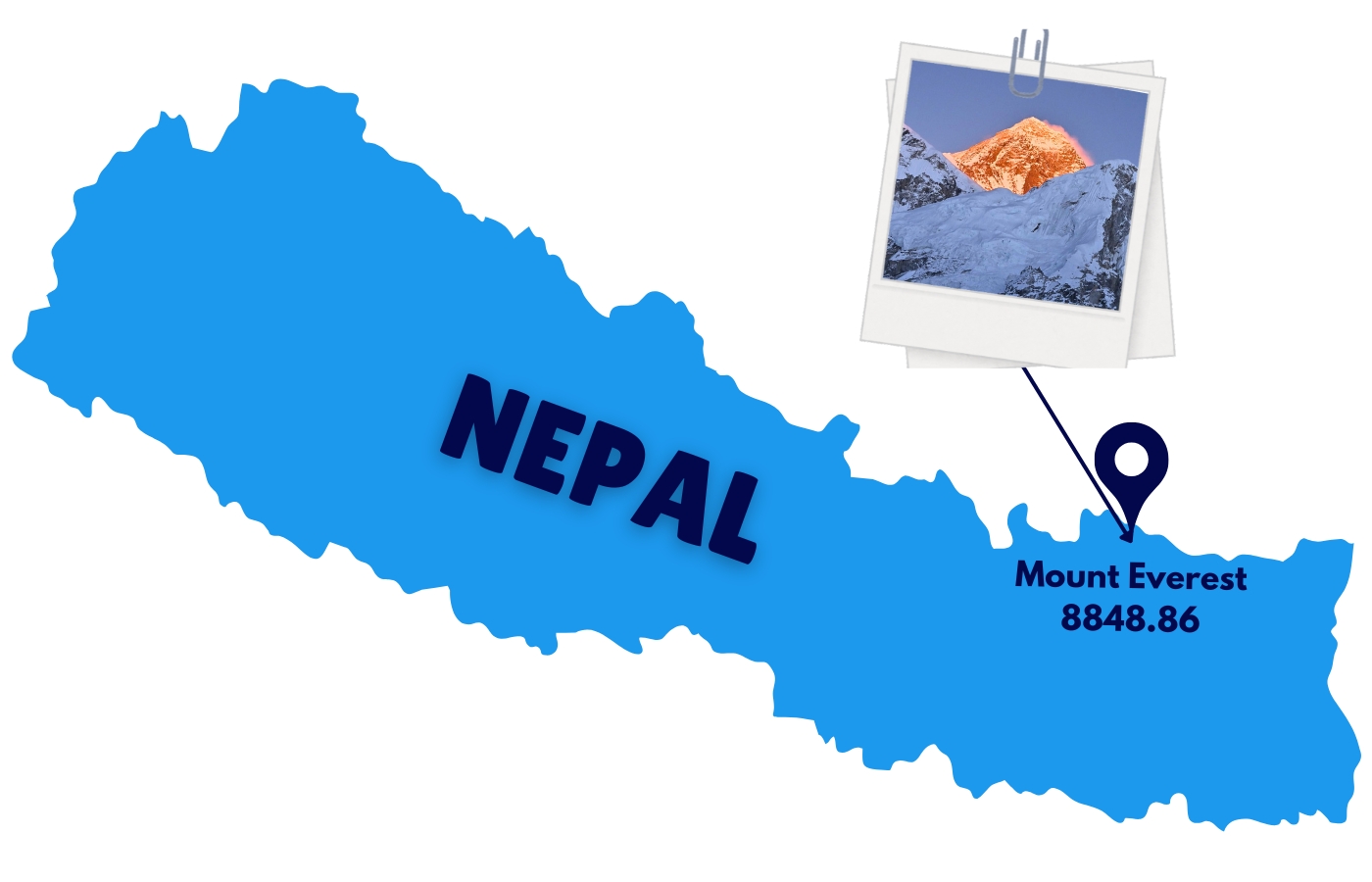
Significance
Symbol of Achievement: Mount Everest attracts adventurers worldwide, a spirit of determination, and all eager to tackle its challenging landscape and extreme heights; many flock around during the peak seasons.
Spiritual Reverence: The local communities of the Everest region revere the mountain as Sagarmatha, which in Nepal signifies the "Forehead of the Sky" and Chomolugma, "The Goddess Mother of the World" in Tibet. Both names are profound symbols that resonate with those living in its shadow.
Geographical Location of Mount Everest
Popularly known as the pinnacle of our planet, Mount Everest is precisely located at coordinates 27.9881° N latitude and 86.9250° E longitude. These precise figures establish it as a distinctive landmark in the majestic Himalayas' heart.
Nepal-Tibet Border:
Bordering Nepal- Mount Everest, which lies on the international border between Nepal and the autonomous region of China, symbolizes a glaring fusion of shared cultural legacy and ecological significance.
Administrative Divisions:
In Nepal: Ideally located within the Solukhumbu District, Mount Everest, a treasured part of Sagarmatha National Park, is popular for its remarkable biodiversity and breathtaking landscapes. This UNESCO World Heritage Site holds an esteemed recognition all over the world.
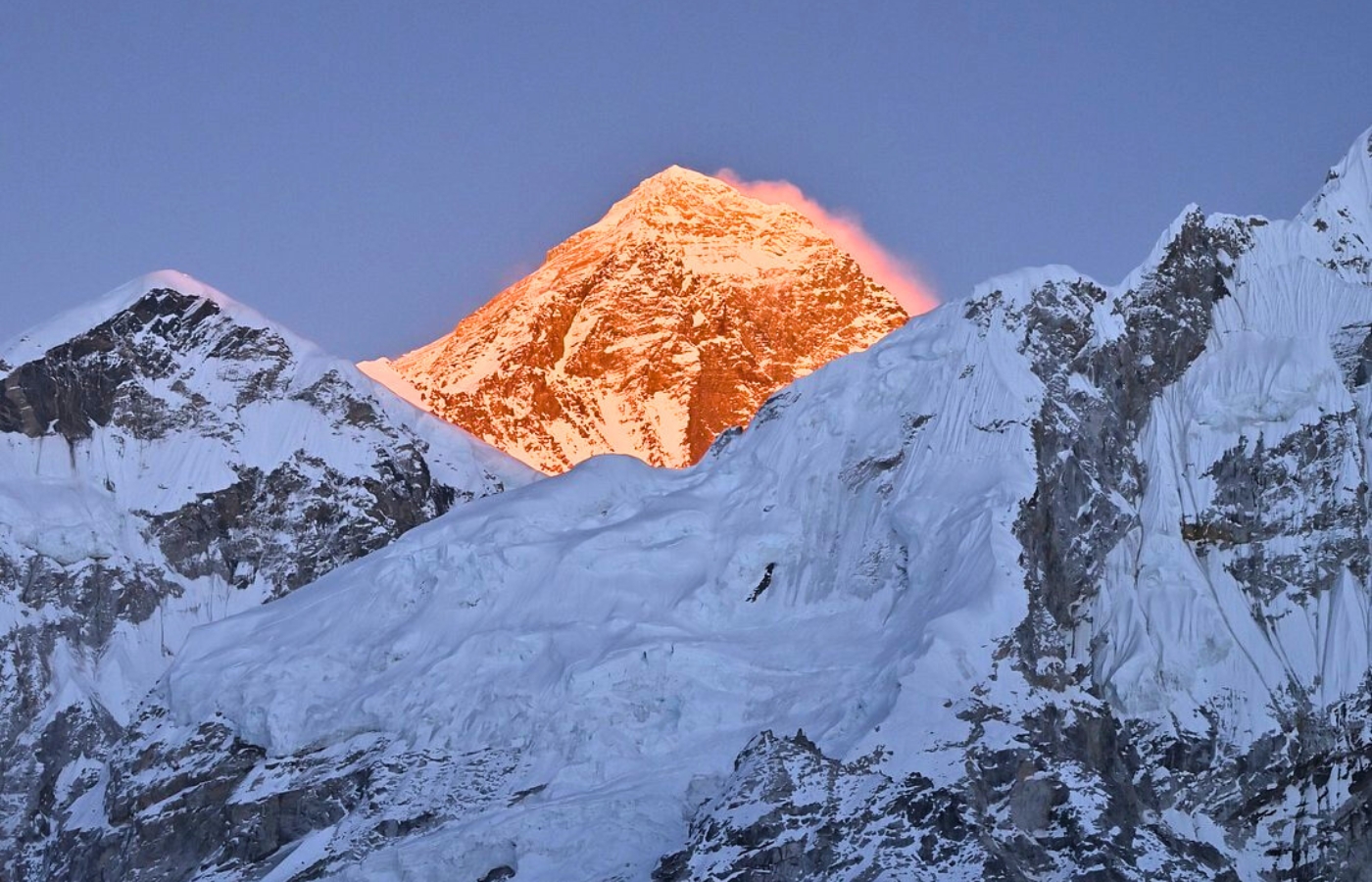
In Tibet (China): The northern face of Everest is found in Tingri County, part of the Xigazê Prefecture, renowned for its dramatic high-altitude plateaus and striking natural scenery.
Himalayan Range: As a crown jewel of the Mahalangur Himal sub-range, Mount Everest is an integral component of the more extensive Himalayan mountain range.
Himalayan Reach: This extensive mountain range extends across five countries—Nepal, Tibet (China), India, Bhutan, and Pakistan—rendering it a remarkable international wonder and making it a truly international marvel for travelers around the globe.
Surrounding Peaks: Impressive neighbors, which include Lhotse (8,516 meters), Makalu (8,485 meters), and Cho Oyu (8,188 meters), flank Mount Everest, each adding to the majestic skyline of this awe-inspiring region.
Historical and Cultural Significance of Mount Everest
The significance of Mount Everest is far beyond its geographical stature, and it's more about the embodied rich cultural and spiritual meanings that are reflected in its local names:
Nepali: Known as Sagarmatha, which translates to "Forehead of the Sky," this name highlights the mountain's majestic height and its celestial associations.
Tibetan: Referred to as Chomolungma, or "Goddess Mother of the World," it captures the mountain's revered status among the Tibetan people.
Naming History
The Western designation of Mount Everest emerged during the 19th-century Great Trigonometric Survey of India.
Original Designation: "Peak XV" was formally identified as the tallest mountain in the world in 1852, a meticulous trigonometric calculation conducted by Indian mathematician Radhanath Sikdar.
Renaming: In 1865, the Royal Geographical Society honored Sir George Everest, a British Surveyor General of India, with the mountain's current name. Sir George, who is said to have disapproved of the conferred tribute.
Although Mount Everest transcends its status as a geographical wonder, it is a profound spiritual symbol for the indigenous communities.
Hinduism: The Nepalese Hindu community sees Sagarmatha as a sacred mountain. They believe its magnificent peaks connect them to the divine. Before setting out on journeys, the climbers and trekkers perform regular rituals and make offerings to ensure their safety.
Buddhism: The name Chomolungma is held in high esteem by Tibetan Buddhists. They pay homage to the divine spirits believed to dwell there.
Geological and Physical Features of Mount Everest
Mount Everest is a powerful reminder of the Earth's ever-changing geological history.
Tectonic Collision: The mountain was formed by the ongoing collision of the Indian Plate and the Eurasian Plate, a process that began about 60 million years ago during the Paleogene period.
Growth Over Time: With an average rate of 4 millimeters every year, Mount Everest, the highest peak, continues to rise due to the persistent movement of these tectonic plates.
Geological Composition of the Mount Everest:
Everest has an interesting story about its geological composition; however, the physical structure of Mount Everest depicts its intricate geological heritage, which has evolved.
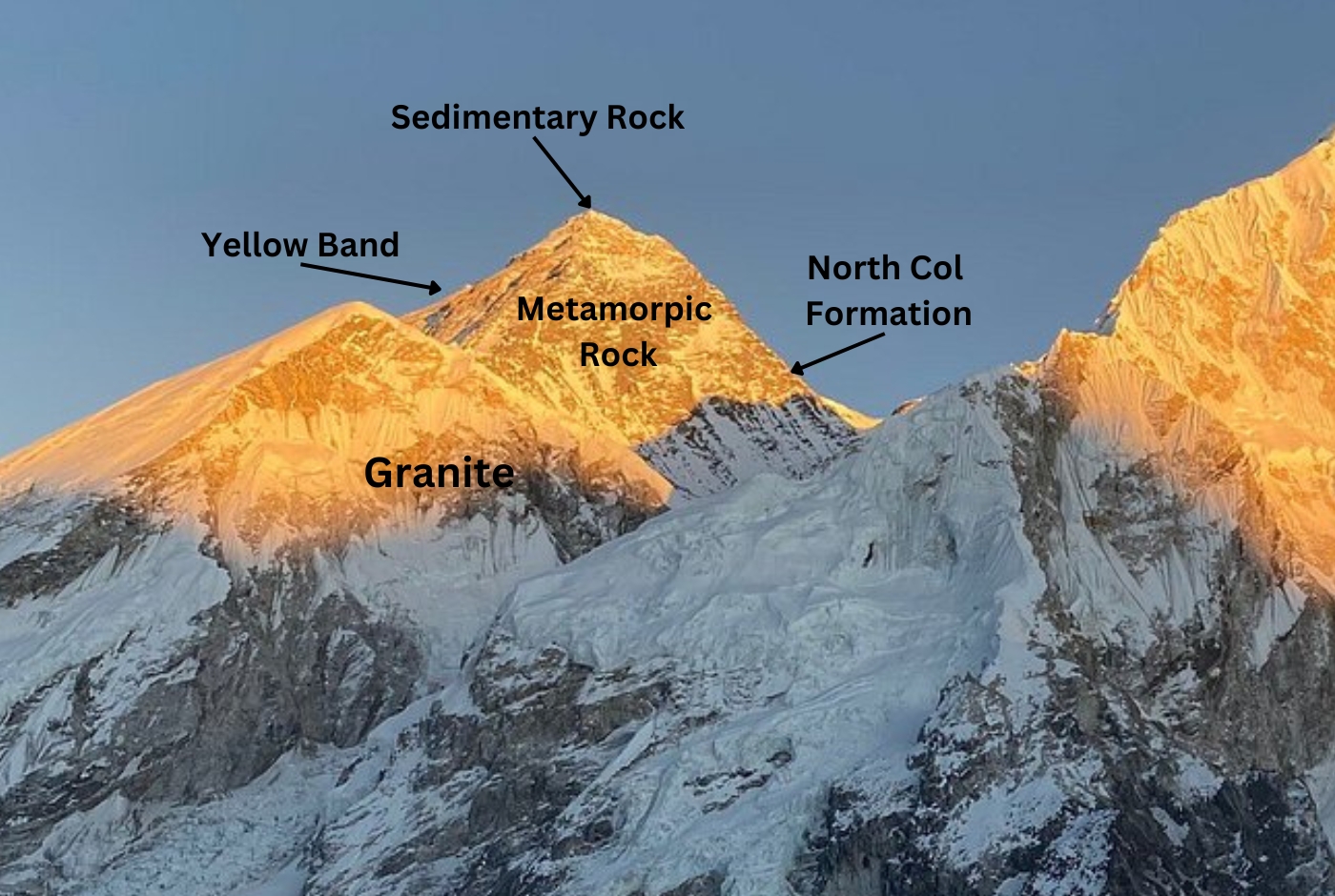
Rock Types
- Sedimentary Rocks: The combination of ancient marine limestone and shale layers of rocks found in the mountainous region are remnants of the long-vanished prehistoric Tethys Ocean that existed from the end of the Paleozoic era until the Cenozoic era.
- Metamorphic Rocks: The lower regions of Mount Everest consist of schists and gneisses, which were formed through significant heat and pressure. These lower areas are distinguished by schists and gneisses, developed under extreme heat and pressure conditions.
- Yellow Band: This distinctive layer of marbled limestone, visible just below the summit, is a notable marker for climbers and geologists.
Topography
The topography of Everest is inexpressible because of its rugged topography, steep ridges, valleys, massive ice glaciers, and the surrounding mountains, which spellbound the climbers and the tourists.
Ridges:
- Southeast Ridge: A ridge popular because of the climbing route, traversing the Khumbu Icefall and climbing up to the South Col. between Mount Everest and Lhotse.
- Northeast Ridge: The Northeast Ridge, a desired route for ascent from Tibet for experienced climbers, features the demanding Second Step, a challenging pitch between 28,140 and 28,300 ft.
- West Ridge: This route is used less frequently and poses considerable technical challenges for trekkers.
Glaciers:
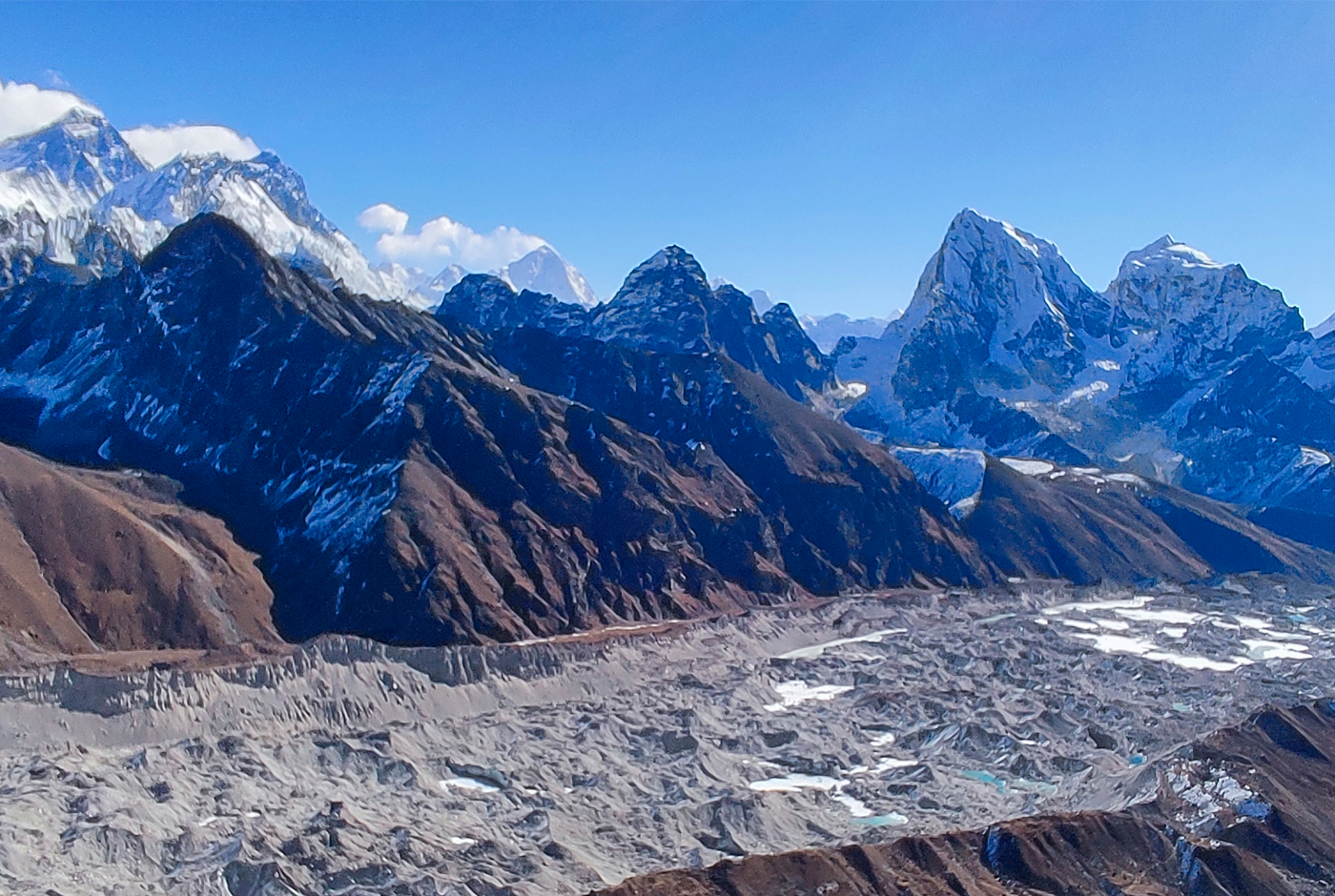
The icy glaciers of the Everest region, along with its surrounding landscape, are no wonder a stunning site to capture climbers. Still, they also make it challenging to ascend to higher altitudes.
- Khumbu Glacier: Found on the southern slope of Mount Everest, this glacier supplies water to the Dudh Kosi River.
- Rongbuk Glacier: Positioned on the northern flank, it channels water into the Rong River.
Icefalls:
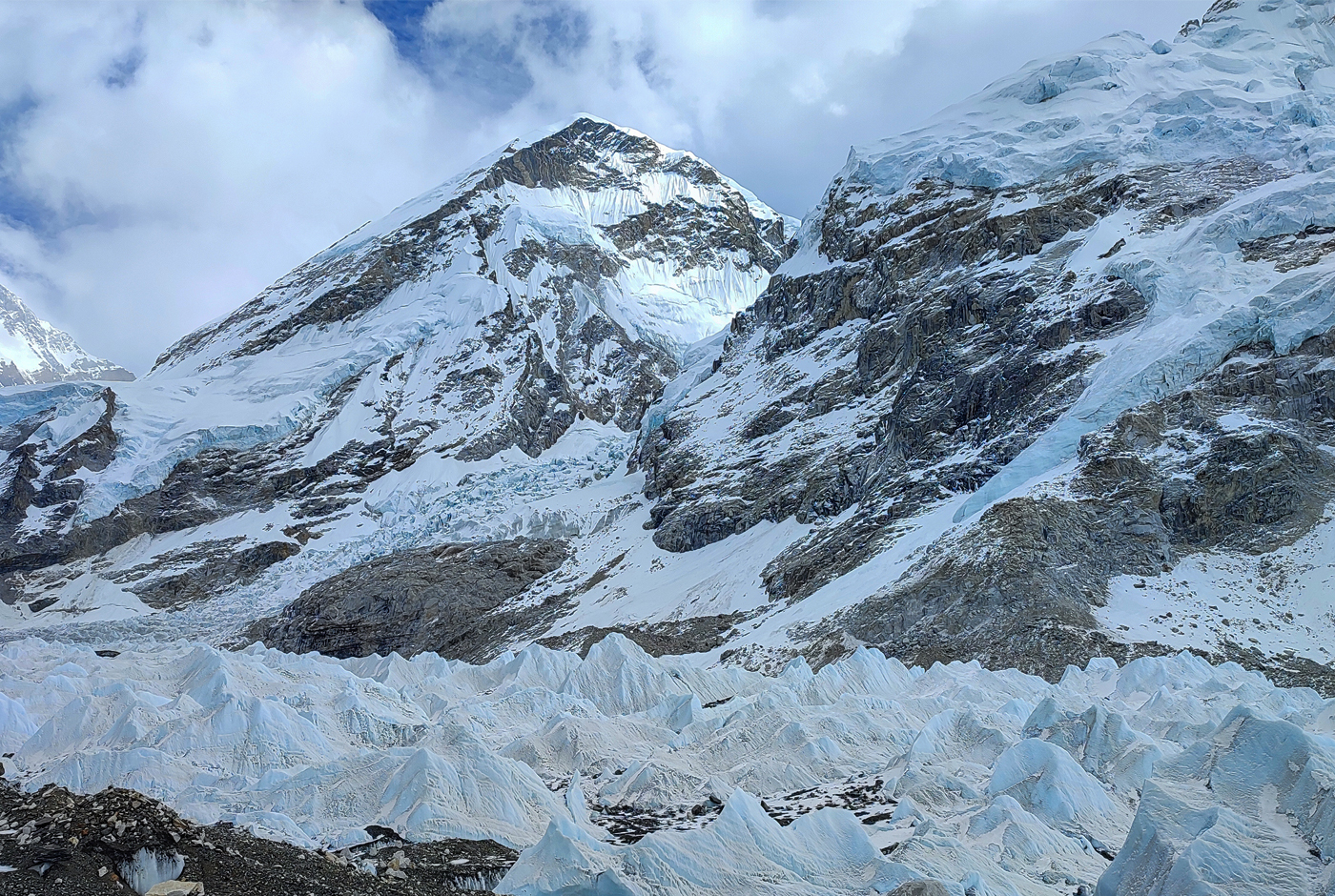
- Khumbu Icefall: Renowned for its large crevasses and ever-shifting ice, this section is one of the most dangerous for climbers.
- Western Cwm (Valley of Silence): A U-shaped glacial valley flanked by towering walls offers a quieter yet demanding part of the southern route.
The Height of Mount Everest
Height Evolution: The height has been revised over time due to technological advancements and the geological changes in the mountains.
1852: The Great Trigonometric Survey of India first determined Everest's height at 8,848 meters (29,029 feet), which has been accepted for over a century.
2020: A collaborative effort by Nepal and China established a revision of Mount Everest's new height of 8,848.86 meters (29,032 feet). The newly updated measurement of the mighty mountain considers variables such as snow cover and the thickness of the ice cap to improve accuracy.
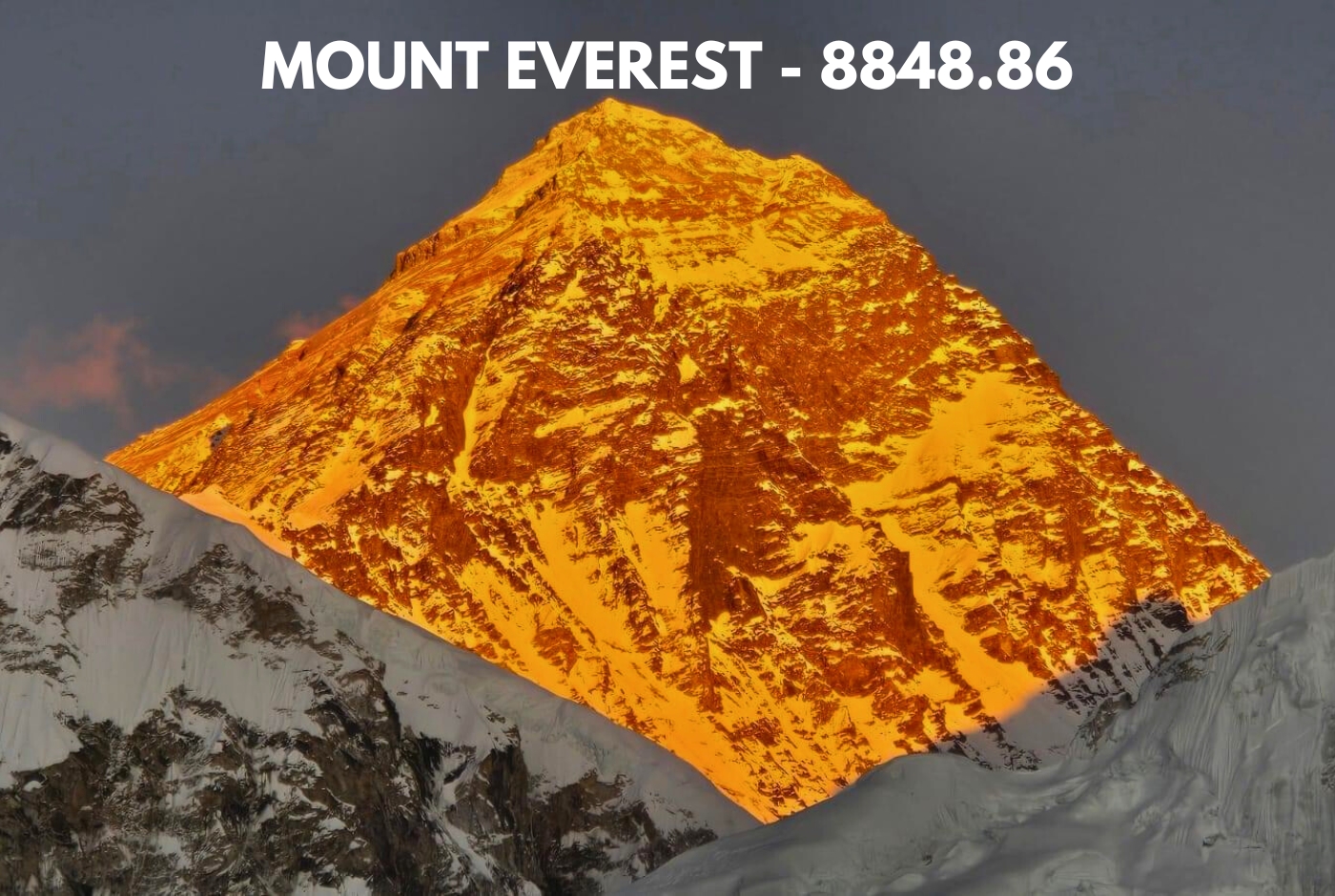
Measurement Challenges:
A project led by the Nepal government to pinpoint the accurate height of Mount Everest presented critical natural and technical difficulties as it wasn't all about measuring the top of the mountain but also finding the bottom to get a precise measurement.
Snow Cover Variability:
The changes in the snow cover, which led to seasonal fluctuation in snow and ice thickness, greatly affected the accuracy of Mount Everest's height measurements.
The year 2020 was a significant breakthrough as the height of Mount Everest was measured using advanced GPS and radar technologies to consider the depth of the snow at the bottom level.
Tectonic Activity:
The convergence of the two most extraordinary tectonic plates, the Indian and Eurasian, results in an annual rise of about four millimeters for the mountains. Predictably, seismic events like the earthquake of 2015 in Nepal can alter the mountain's height and structure.
Collaborative Efforts
The year 2020 is marked as a momentous recalibration event because the most accurate and updated measurement of Mount Everest was ensured through the collaboration of Nepal and China. This significant recalibration ensured the climbers and researchers had the latest information for their expeditions and studies.
China officially announced the first recognized formal measurement of Everest's height. The survey used GPS technology, gravity sensors, and laser theodolites to guarantee maximum precision.
Climbing History and Routes of Mount Everest
First Successful Ascent (1953): On May 29, 1953, Sir Edmund Hillary and Tenzing Norgay created history by becoming the first to conquer the summit of Mount Everest. A remarkable journey pursued by Colonel John Hunt as a part of a British expedition marked mountaineering history as a pivotal moment.
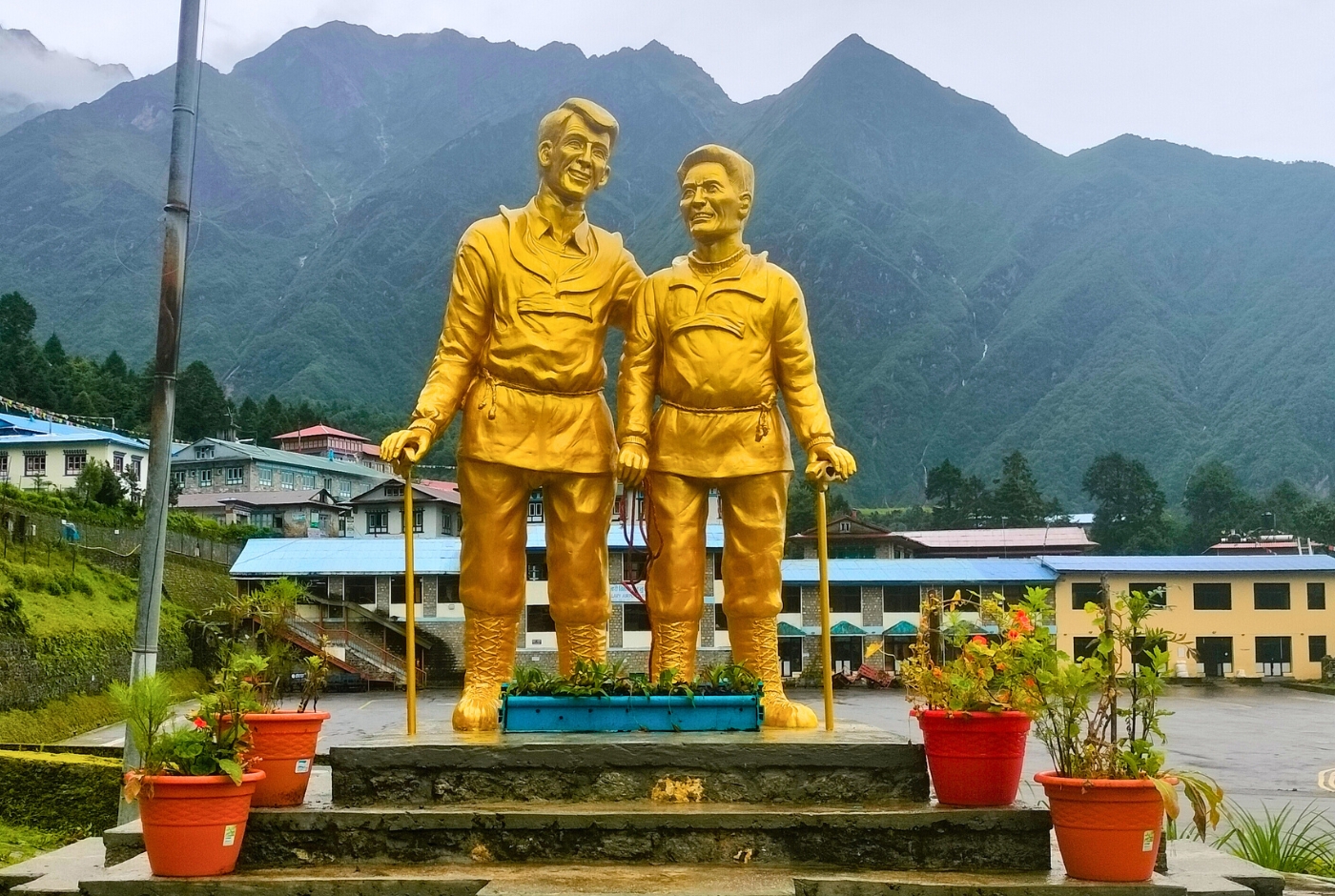
Key Records and Milestones:
- First ascent without supplemental oxygen (1978): Reinhold Messner and Peter Habeler created a significant event by becoming the world's first climbers to summit Mount Everest without any supplemented oxygen, which inspired many prospective climbers. Their achievement not only showcased the remarkable strength and endurance of the human spirit when they ventured into the mountain's treacherous "death zone."
- First solo ascent (1980): Messner achieved a solo climb via the North Col Route, setting a new benchmark in mountaineering.
- First female ascent (1975): Junko Tabei from Japan became the pioneer woman to stand at the summit of Mount Everest.
- Youngest climber (2010): Jordan Romero created history by ascending Mount Everest via the North Col Route at just 13 years of his age.
Climbing Routes:
South Col Route (Nepal):
The South Col Route is popular among climbers but presents challenges like the Khumbu Icefall, known for its complex crevasses. The Hillary Step, which used to require technical skills, collapsed in 2015. Despite the challenging route, many travelers choose it because of its easy, straightforward navigation and strong infrastructure.
Khumbu Icefall: Khumbu Icefall, known for its intricate arrangement of crevasses and ice formations, is one of the most formidable sections.
Hillary Step: In 2015, the Hillary Step collapsed due to its ruggedness and technical climbing expertise. It has made many climbers choose their climbing experience on the South Col Route because it offers more straightforward navigation and a well-established support system.
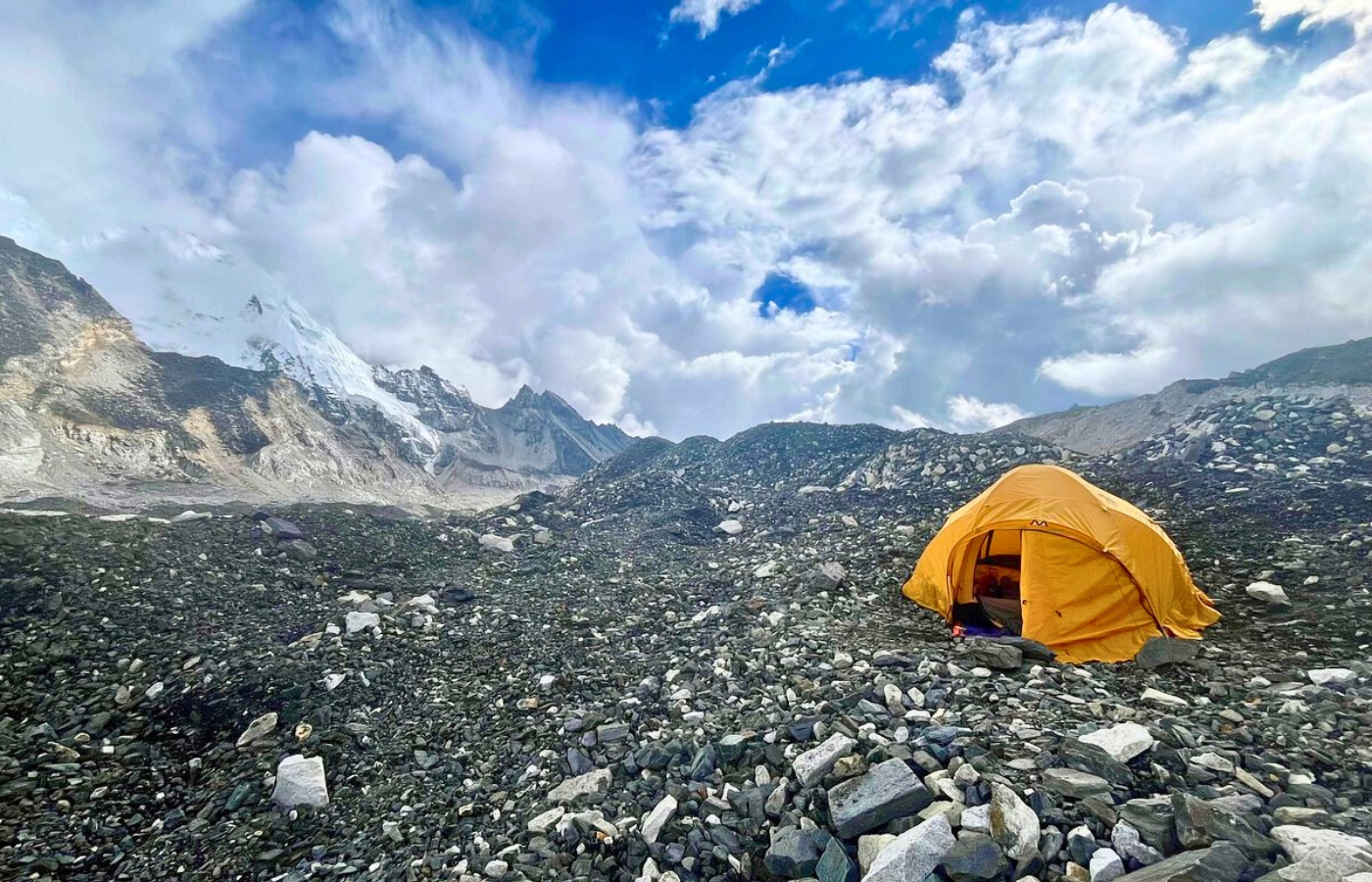
North Col Route (Tibet):
Rongbuk Glacier: The journey begins here, offering beautiful views and presenting a challenging start to the Everest expedition.
Northeast Ridge: "The Second Step," a rock face known for its technical challenges, has now come into operation for climbers after a fixed ladder is equipped to aid smooth ascent for climbers on this route.
Challenges:
Harsh weather conditions and technical obstacles make this route less frequented but highly revered among experienced climbers.
Nepal Elevates Mt Everest Climbing Permit Fees by 36%- New Permit Cost
In a significant policy shift, Nepal has announced a 36% increase in permit fees for Mount Everest climbers, marking the first adjustment in nearly a decade. Effective September 2025, the cost for a spring season permit will rise from $11,000 to $15,000. Fees for the autumn season will increase to $7,500, and the winter season to $3,750.
This move aims to bolster revenue and address concerns over overcrowding and environmental degradation on the world's highest peak. The additional funds are expected to enhance safety measures and support environmental preservation efforts.
While some expedition organizers anticipated the hike, it's unclear how it will impact the number of climbers. Nepal issues approximately 300 Everest permits annually, and the increased fees may influence climbers' decisions in the upcoming seasons.
Challenges of Climbing Mount Everest:
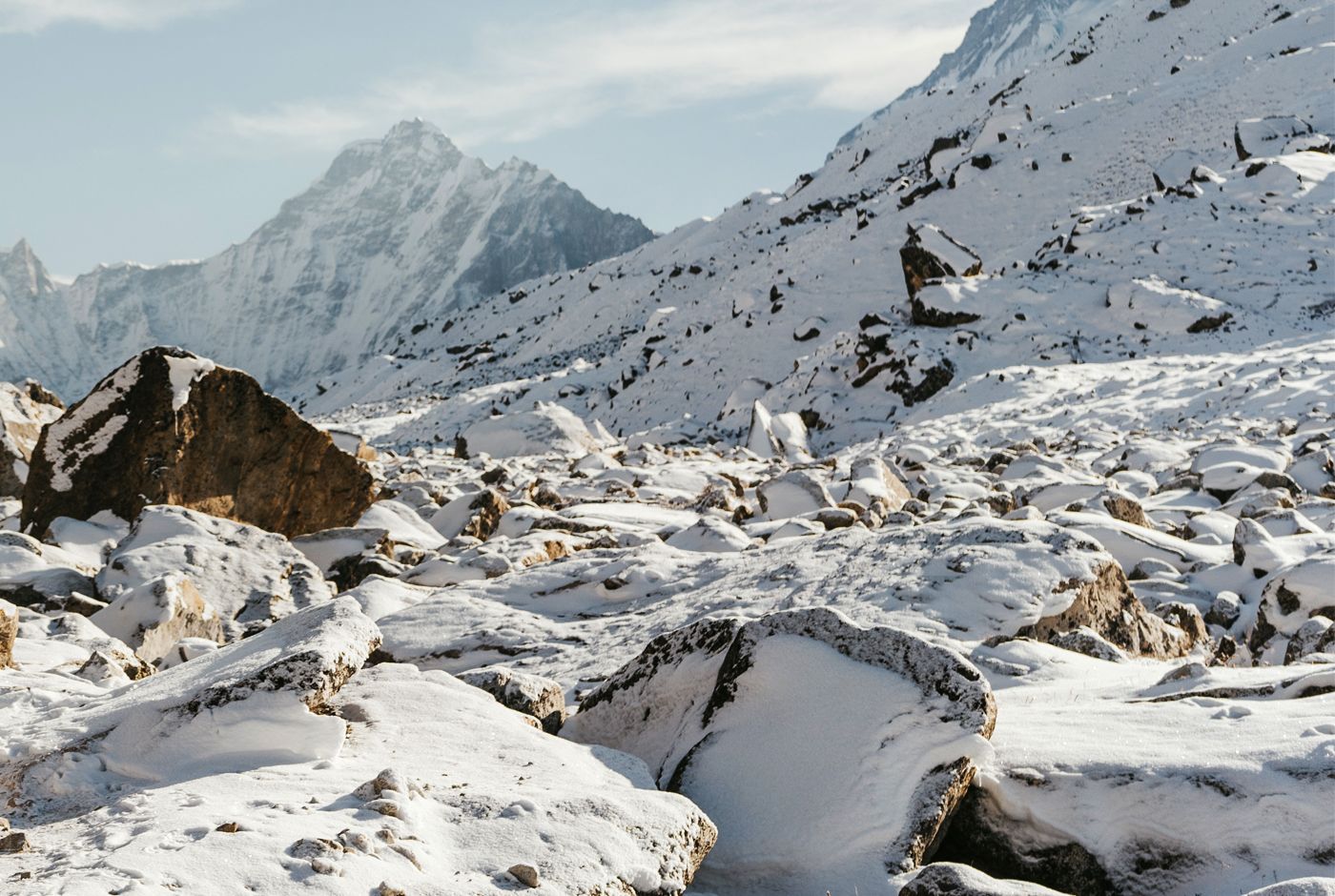
Altitude Sickness: Climbers must confront the lethal "death zone" above 8,000 meters, where oxygen levels drop to critically low temperatures.
Unpredictable Weather: Unpredictable weather conditions may spawn life-threatening conditions, often accompanied by abrupt storms and icy weather conditions in the region.
Physical and Technical Demands: Outstanding skills and rigorous preparation in maintaining physical health are key for climbers that will enable them to navigate icefalls, steep rock walls, and treacherous ridges.
Overcrowding Risks: During peak climbing seasons, congestion may result in delays and safety concerns.
Adventure and Trekking Opportunities Around Mount Everest
Exciting Trekking Routes of EBC:
Everest Base Camp Trek (EBC):
Highlights of the trek:
- Kala Patthar: A remarkable landmark popular in the Everest region provides the most accessible close-up view of the magnificent Mount Everest and its surrounding peaks.
- Namche Bazaar: The vibrant Sherpa hub and a key acclimatization stop for travelers captivate the heart of travelers with its scenic beauty.
- Tengboche Monastery: A Buddhist monastery that reflects serenity and rich cultural and spiritual insights.
- Duration: This trek lasts 12 to 16 days, depending on how well you assimilate to altitude.
- Difficulty Level: The trek will likely be moderate to challenging, primarily due to Everest's high altitudes and rugged terrain region.
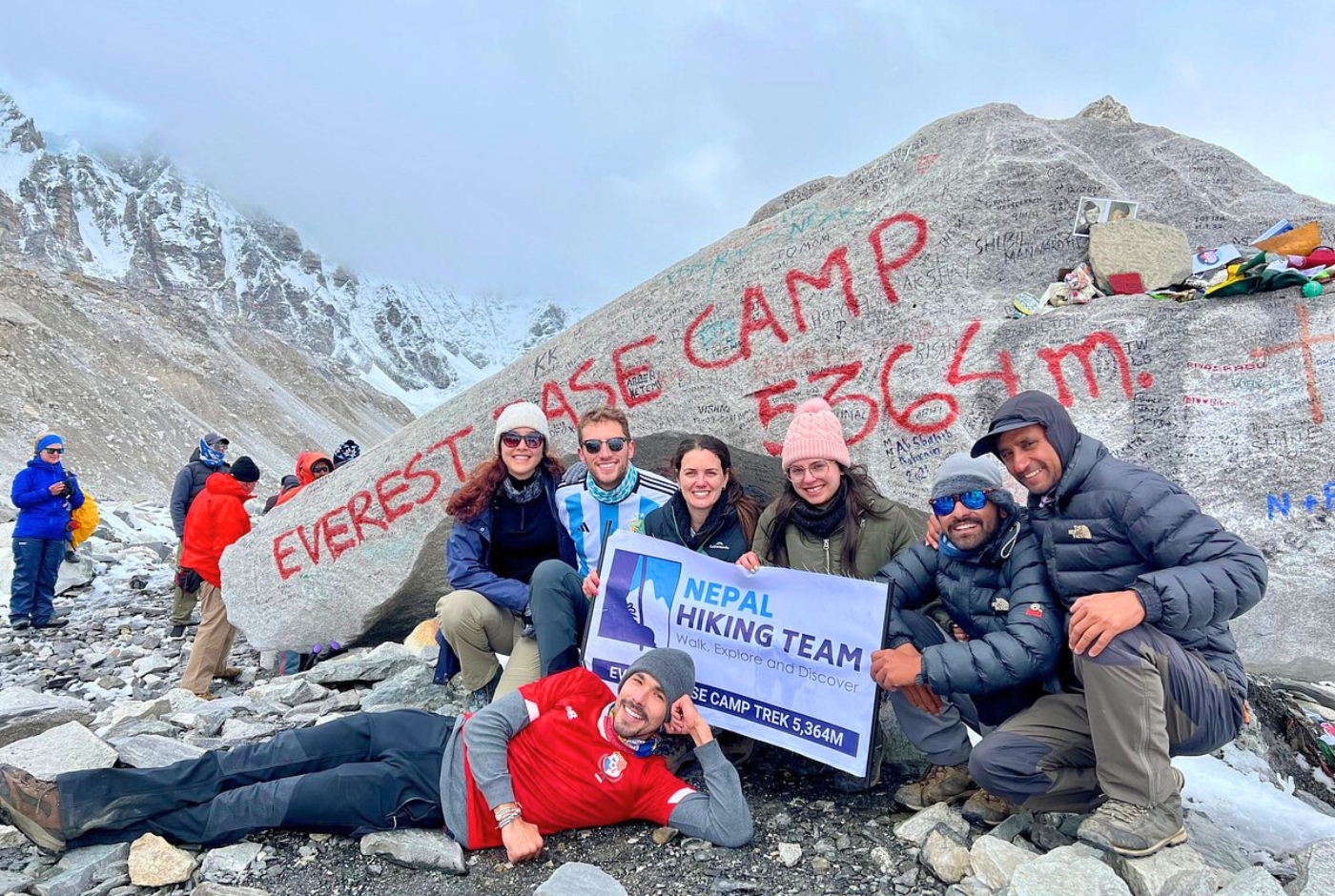
Gokyo Lakes Trek and Three Passes Trek:
Gokyo Lakes Trek: This route showcases stunning emerald glacial lakes and includes the revered Gokyo Ri viewpoint, renowned for its magnificent views.
Three Passes Trek: This circuit involves crossing Kongma La (5,535m), Cho La (5,420m), and Renjo La (5,360m), providing a more adventurous alternative route.
Duration: An excellent choice for climbers, the Gokyo Lake trek lasts 13 to 15 days. To accomplish this trek, climbers require outstanding expertise and endurance.
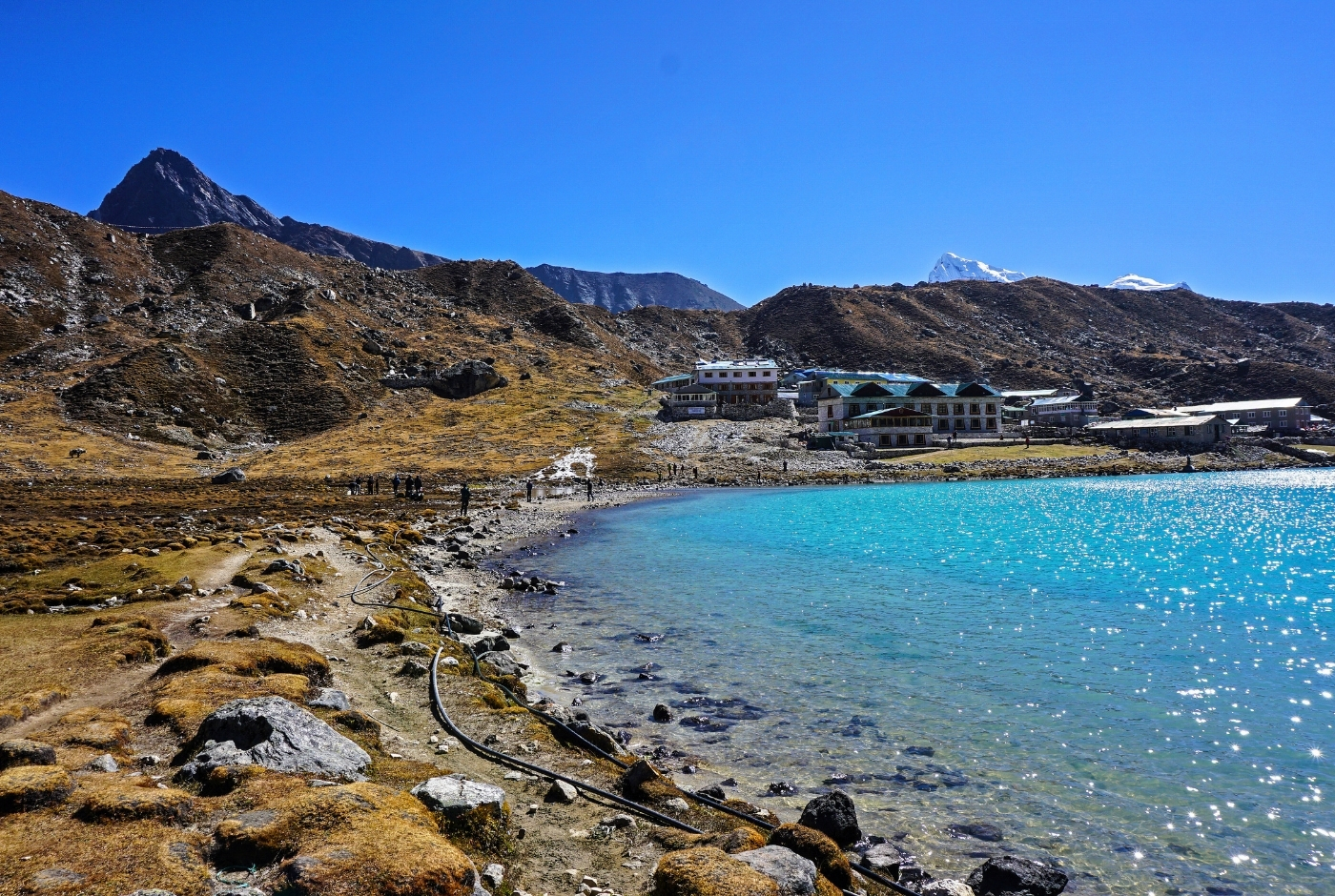
Non-Climbing Adventures:
To experience the beauty of Everest without any strenuous trekking, the non-climbing adventures of the Nepal Hiking Team promise an unforgettable experience that you'll cherish for a lifetime.
Helicopter Tours:
The helicopter tours are just an incredible experience, as you can enjoy the aerial views as you fly over the Khumbu Glacier, Everest Base Camp, and Kala Patthar, which is just beyond words. This tour is unbeatable for trekkers trying to avoid the strenuous trekking challenges and has limited time.
Cultural Immersions:
Enjoy rich Himalayan traditions by visiting Sherpa villages, monasteries, and local markets.
Best Times to Visit:
The changing seasons accordingly shape the trekking and adventure activities:
Pre-Monsoon (April–May): With clear skies, moderate temperatures, and blooming rhododendron forests, this period is ideal for trekking season.
Post-Monsoon (September–October): The time of the year draws most adventurers because of the crisp air, clear mountain vistas, and favorable weather.
Flora and Fauna in the Everest Region
The Everest region is home to the highest peak as well as diverse species of plants and animals that have naturally adapted to extreme harsh conditions, thus creating a landscape for climbers and tourists to enjoy. The mesmerizing beauty and the rich diversity of flora and Fauna found in this challenging environment never cease to amaze those who visit.
- Rhododendrons and Junipers: These species are typically found at lower elevations, ranging from 3,000 to 4,000 meters, flourishing in the Himalayan foothills.
- Alpine Meadows: During summer, the high-altitude meadows burst into color with vibrant wildflowers such as edelweiss and blue poppies.
- Hardy Mosses and Lichens: Above 5,000 meters of sea level, hardy organisms cling to rocks, thriving in the cold and oxygen-poor conditions of the Everest region, where unique and endangered wildlife has evolved to survive in this challenging environment.
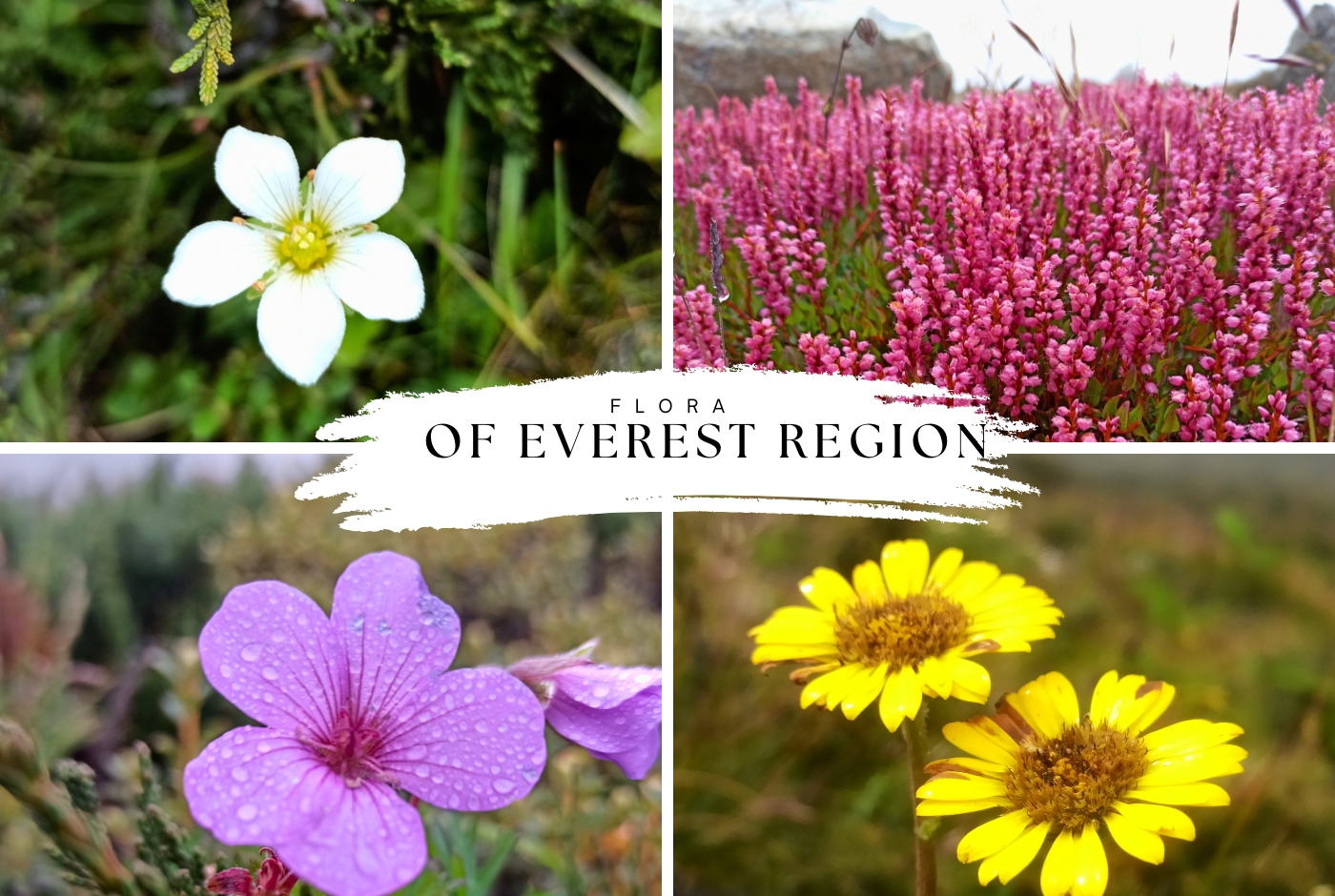
Mammals:
Snow Leopard: This rare and elusive predator represents the fragile ecosystem of the Himalayas.
Himalayan Tahr: A wild goat distinguished by its dense fur, is frequently observed traversing the cliffs of the mountainous region of Everest.
Red Panda: The most enchanting species are critically endangered in the forested lower elevations.
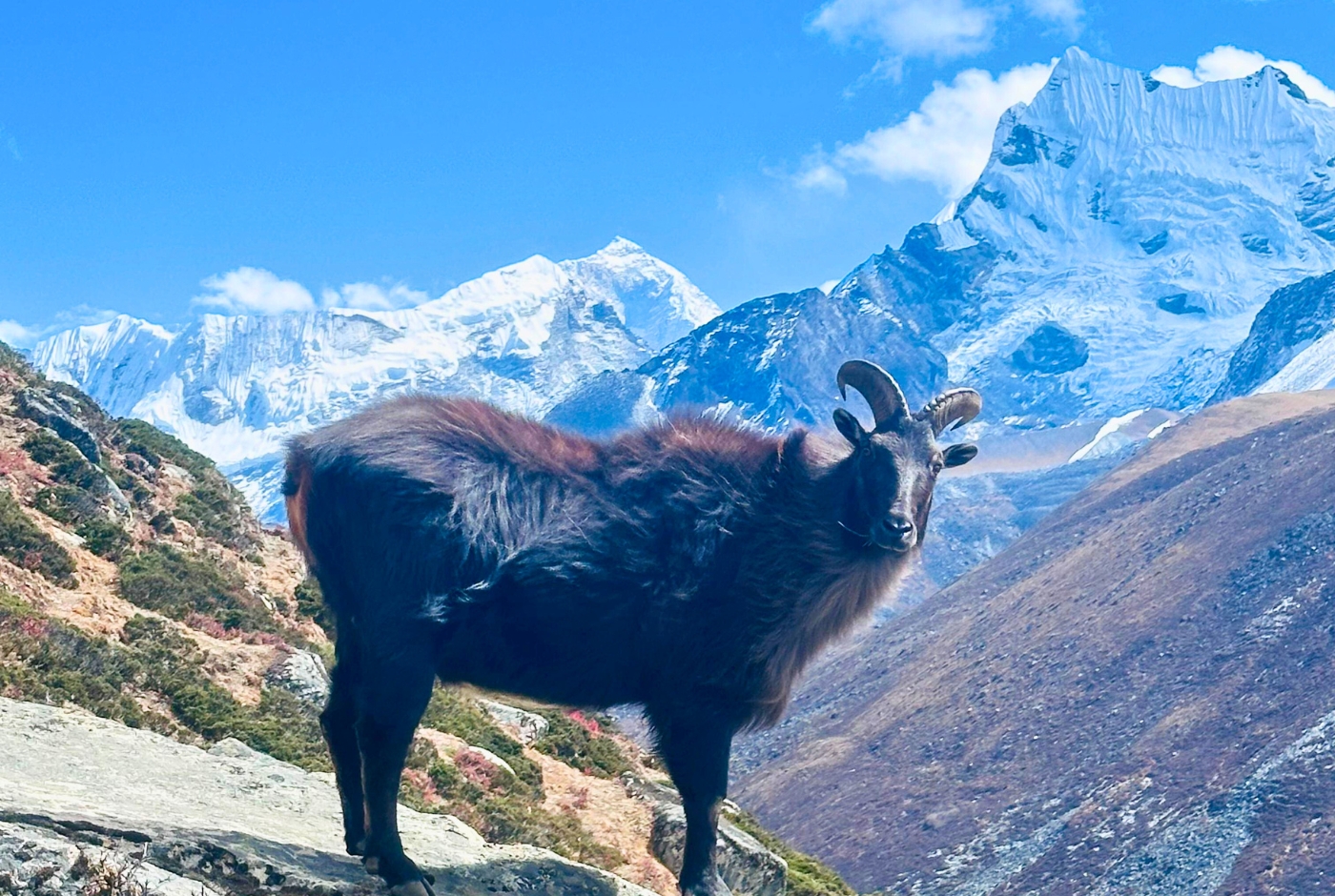
Birds
Himalayan Monal: A pheasant native to the Himalayan mountains, it is esteemed as the national bird of Nepal and is greatly admired for its colorful plumage.
Bar-headed Geese: Famous for their remarkable capacity to soar at elevated altitudes, they are known to undertake migrations across the Himalayan mountains.
Sherpa Communities and Cultural Exploration Around Mount Everest
The Sherpa people, native to the Everest region, are the pioneers of the Himalayan trekking and mountaineering activities.
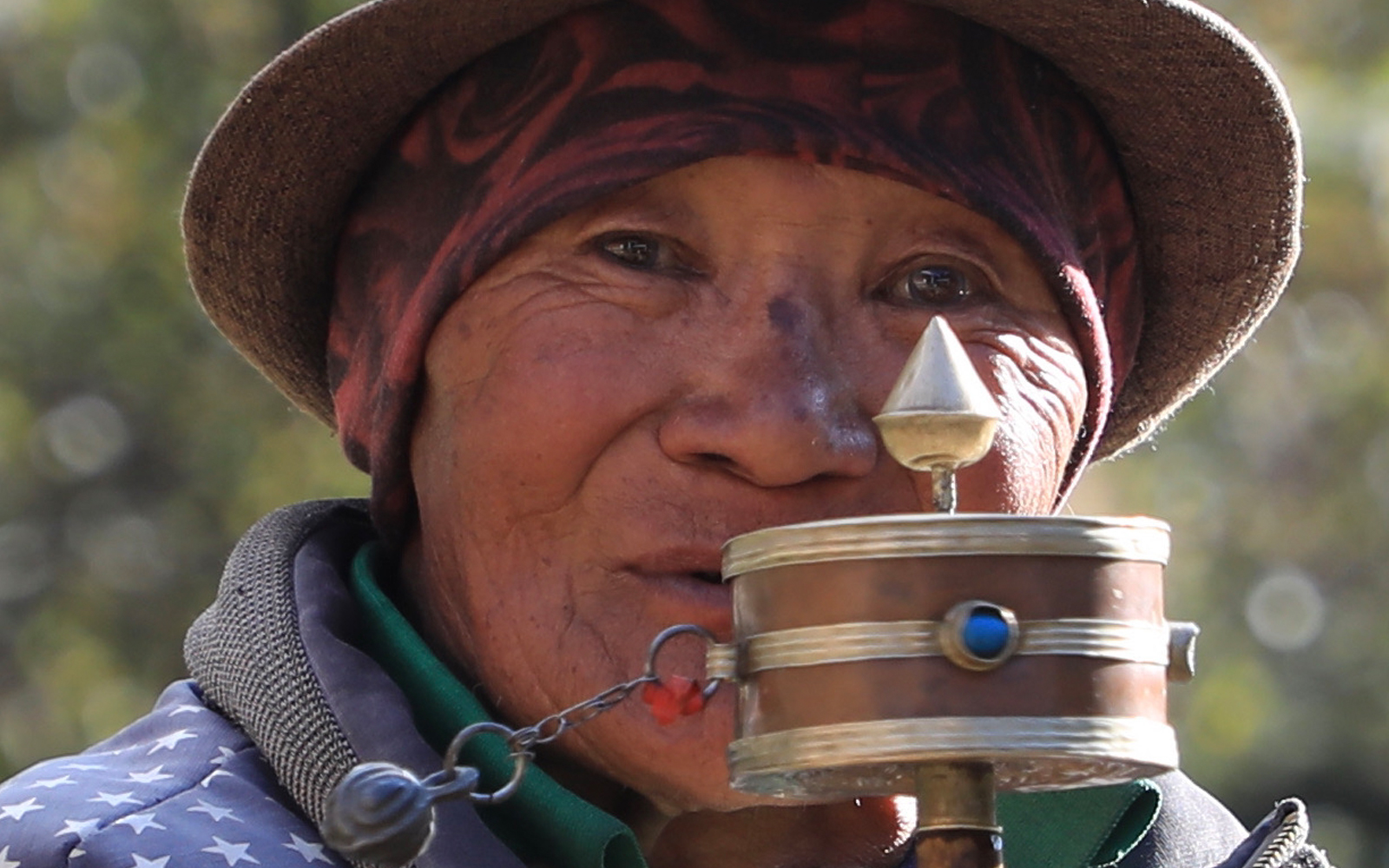
Guides and Contributors:
The Sherpas of the Himalayan region are vital during the Everest expeditions because of their strength, endurance, and ability to excel at high elevations. The Sherpas, traditionally known as mountain people, are well-known worldwide for their physical strength, bravery, endurance, and mountain climbing skills. The "Guardians of the Himalayas" are key people for climbers as they serve as guides, porters, and climbers for trekkers on their expedition to the Everest region. A notable example is Tenzing Norgay, who conquered Everest alongside Edmund Hillary and created a mountaineering history.
Symbiotic Relationship with Everest:
Sherpas of the Everest region are indispensable for climbers because they possess profound knowledge of the region and climbing techniques handed down through generations. The Everest region is not only a rich cultural repository that provides insights into the lifestyle of Sherpas but also reflects their spiritual ties to the mountains.
Additionally, Sherpa communities partake in festivals such as Mani Rimdu, and the prayer flags and mani walls found along trekking routes represent spiritual harmony. Visitors can experience genuine Sherpa hospitality in local teahouses and learn about traditional Sherpa livelihoods.
Environmental and Conservation Efforts in the Everest Region
Severe environmental issues: The environmental issues in the Everest region have highlighted the risks of crevasses in the mountains and the effects of severe global warming.
Glacial Retreat: The melting of ice glaciers in the Khumbu region has altered the landscape and the terrain, thus increasing the risk of crevasses. Glacial mass loss affects the freshwater supply for locals living in that region.
Shifting Weather Patterns: The change in the weather conditions of the Everest region has reduced snowfall and increased avalanches and rockfalls, which restrict climbers from pursuing their journeys. This kind of alteration in climatic conditions also disrupts the trekking plans of the climbers to a great extent.
Sustainability Measures in the Everest Region:
Despite the millions of climbers drawn to the breathtaking beauty of Mount Everest, serious environmental issues have emerged in the mountains. As a result, the Everest region in Sagarmatha National Park of the Solukhumbu district needs our attention to protect its landscape, which further results in crevasses. Glacial mass loss also threatens the freshwater supply for the locals who call this region their home.
Cleanup Projects: Cleanup programs are increasingly becoming crucial in the Everest region due to the influx of visitors. One of the cleaning projects, Eco Everest Expeditions, has done a notable cleaning project in the mountain region. Moreover, other ongoing awareness programs promote responsible climbing and trekking practices among climbers.
Eco-Tourism Initiatives: Eco-tourism initiatives primarily advocate sustainable trekking methods for climbers. The local tea houses and lodges in the Everest region are encouraged to use renewable energy sources so that these local businesses can increase their economy and the environment. A sustainable practice is obligatory not only for the locals living there but also for the travelers.
Regulatory Frameworks:
Sagarmatha National Park (Nepal): The National Park, designated as a UNESCO World Heritage Site, implements stringent rules concerning climbing permits and waste management.
Qomolangma Nature Preserve (Tibet): This preserve safeguards biodiversity and oversees tourism activities to lessen environmental impact in that region.
Call for Global Responsibility:
There is an urgent call for the globe to push for accountability to address the emerging climatic conditions in the Everest region, and this is vital for promoting a sustainable and safer future for the Everest region. Tourists and climbers are urged to adhere to Leave No Trace principles and protect the indelible environment that charms many tourists.
Who named Everest?
The name Everest was named by Sir Andrew Waugh, a British officer (Surveyor General of India), in honor of his predecessor, Sir George Everest.
Is Mount Everest still growing?
Yes, the world's highest point is still growing by approximately 4 mm every year due to the ongoing collision of the Indian and Eurasian tectonic plates; this tectonic activity was started thousands and millions of years ago.
How many people have climbed Mount Everest and survived?
As of Dec 2024, well above 7000 individuals have successfully reached the peak of mighty Mt. Everest. As per the report, only in year 2024, around 600 climbers have achieved this remarkable master stroke and the number of climbers is predicted to grow even more to conquer the world's highest mountain.
How high is Mount Everest?
Mount Everest is 8,848.86 meters (29,031.7 feet) tall, making it the highest mountain on Earth.
What are the facts of Mt. Everest?
- Everest is growing every year by approximately 4mm, which is about 0.16 inches. It grows annually due to the movements of the tectonic plate.
- Mt. Everest is not a political feature but a purely true physical feature, a natural landform despite straddling between Nepal and Tibet.
- A native people of Everest region are Sherpa, who are renowned for their dexterity in climbing and also play a significant role in guiding expeditions. Their work, courage, and kindness make them the unsung heroes of Everest.
- Everyone is familiar with the famous trekkers Tenzing Norgay and Sir Edmund Hillary, who were the first to reach the mighty Mount Everet successfully. However, there are a lot of untold stories behind, particularly of those courageous Sherpas and other unsung heroes of Everest who laid the groundwork with their sacrifices, resilience, and tremendous support for this iconic achievement.
- Everest Base Camp is not the highest point of Everest. It is just the foothill of Everest, located well below, nearly 3000m down from its peak.
- Above 8000m lies the "Death zone." It is called so because of lack of oxygen, the freezing temperature, and unpredictable climate that makes survival a true test of human tolerance.
Where is Mount Everest Located on world map? Which country Mt. Everest is in? Where do we find it?
The world's tallest mountain, the Mt. Everest is located in Himalayas in South Asia, standing astride between two international borders, Nepal and its neighboring country, Tibet Autonomous Region of China. The peak of Mt. Everest is situated in Asia and is considered the world's highest mountain by globe, with a soaring height of exactly 8,848.86 meters / 29,031.7 feet.
Country-wise, the southern slope or side of Everest lies in the beautiful country Nepal, while the northern slope is in Tibet. While Himalayas extend into India, Mount Everest itself is not located in this nation.
Is Mount Everest a Physical feature?
Everest is a physical feature, not a political, as it is a natural landform formed by the huge ancient collision of the two tectonic plates. Even though it straddles the political boundary between Nepal and Tibet (China), it is not a political pawn to be pushed about on maps since it is not man-made or governed by human-defined boundaries.
What continent is Mount Everest in?
Mount Everest is located in the continent of Asia, specifically on the border between Nepal and the Tibet Autonomous Region of China, within the Himalayas.
Conclusion: The Enduring Legacy of Mount Everest
The legacy of Mount Everest is indescribable, as it is not all about the height, but there's more to it; it is a complete journey marked by an interplay of geography, culture, and adventure. Mount Everest captivates many climbers and trekkers every year. Therefore, Everest serves as a poignant reminder for humans to enjoy its beauty and call for our respect and protection.
The thrill of the climbers ascending the mighty peak isn't limited to the ascent but also the alluring beauty of Everest that it offers for trekkers around the globe to witness the verdant beauty of the surrounding area's landscape. More than just an adventure, it's a complete bliss that one experiences that touches the soul profoundly.
The Nepal Hiking Team is an exceptional travel company that you might find appealing due to our outstanding service and thoughtfully tailored packages. We strive to create experiences that genuinely resonate with our customers' desires, ensuring their journeys are not only memorable but also deeply satisfying to the heart.



